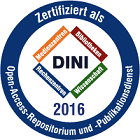Simulating Soil Moisture Dynamics in a Diversified Cropping System Under Heterogeneous Soil Conditions

Simulating Soil Moisture Dynamics in a Diversified Cropping System Under Heterogeneous Soil Conditions

| dc.contributor.author | Engels, Anna Maria | |
| dc.contributor.author | Gaiser, Thomas | |
| dc.contributor.author | Ewert, Frank | |
| dc.contributor.author | Grahmann, Kathrin | |
| dc.contributor.author | Hernández-Ochoa, Ixchel | |
| dc.date.accessioned | 2025-10-24T12:45:05Z | |
| dc.date.available | 2025-10-24T12:45:05Z | |
| dc.date.issued | 06.02.2025 | |
| dc.identifier.uri | https://hdl.handle.net/20.500.11811/13588 | |
| dc.description.abstract | Agro-ecosystem models are useful tools to assess crop diversification strategies or management adaptations to within-field heterogeneities, but require proper simulation of soil water dynamics, which are crucial for crop growth. To simulate these, the model requires soil hydraulic parameter inputs which are often derived using pedotransfer functions (PTFs). Various PTFs are available and show varying performance; therefore, in this study, we calibrated and validated an agro-ecosystem model using the Hypres PTF and the German Manual of Soil Mapping approach and adjusting bulk density for the top- and subsoil. Experimental data were collected at the "patchCROP" landscape laboratory in Brandenburg, Germany. The daily volumetric soil water content (SWC) at 12 locations and above ground biomass at flowering were used to evaluate model performance. The findings highlight the importance of calibrating agro-ecosystem models for spatially heterogeneous soil conditions not only for crop growth parameters, but also for soil water-related processes—in this case by PTF choice—in order to capture the interplay of top- and especially subsoil heterogeneity, climate, crop management, soil moisture dynamics and crop growth and their variability within a field. The results showed that while the impact of bulk density was rather small, the PTF choice led to differences in simulating SWC and biomass. Employing the Hypres PTF, the model was able to simulate the climate and seasonal crop growth interactions at contrasting soil conditions for soil moisture and biomass reasonably well. The model error in SWC was largest after intense rainfall events for locations with a loamy subsoil texture. The validated model has the potential to be used to study the impact of management practices on soil moisture dynamics under heterogeneous soil and crop conditions. | en |
| dc.format.extent | 25 | |
| dc.language.iso | eng | |
| dc.rights | Namensnennung 4.0 International | |
| dc.rights.uri | http://creativecommons.org/licenses/by/4.0/ | |
| dc.subject | process-based crop model | |
| dc.subject | pedotransfer function | |
| dc.subject | within-field heterogeneity | |
| dc.subject | soil water content | |
| dc.subject.ddc | 550 Geowissenschaften | |
| dc.subject.ddc | 580 Pflanzen (Botanik) | |
| dc.title | Simulating Soil Moisture Dynamics in a Diversified Cropping System Under Heterogeneous Soil Conditions | |
| dc.type | Wissenschaftlicher Artikel | |
| dc.publisher.name | MDPI | |
| dc.publisher.location | Basel | |
| dc.rights.accessRights | openAccess | |
| dcterms.bibliographicCitation.volume | 2025, vol. 15 | |
| dcterms.bibliographicCitation.issue | iss. 2, 407 | |
| dcterms.bibliographicCitation.pagestart | 1 | |
| dcterms.bibliographicCitation.pageend | 25 | |
| dc.relation.doi | https://doi.org/10.3390/agronomy15020407 | |
| dcterms.bibliographicCitation.journaltitle | Agronomy | |
| ulbbn.pubtype | Zweitveröffentlichung | |
| dc.version | publishedVersion | |
| ulbbn.sponsorship.oaUnifund | OA-Förderung Universität Bonn |
Dateien zu dieser Ressource
Das Dokument erscheint in:
-
Publikationen (12)




